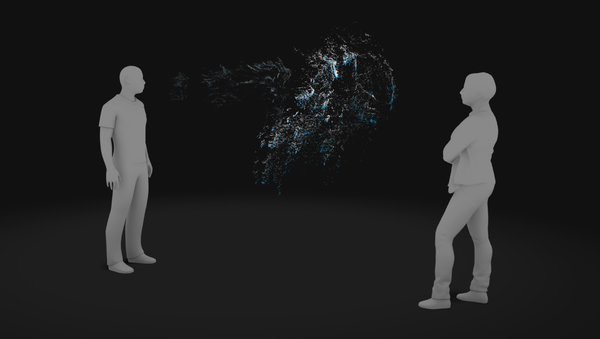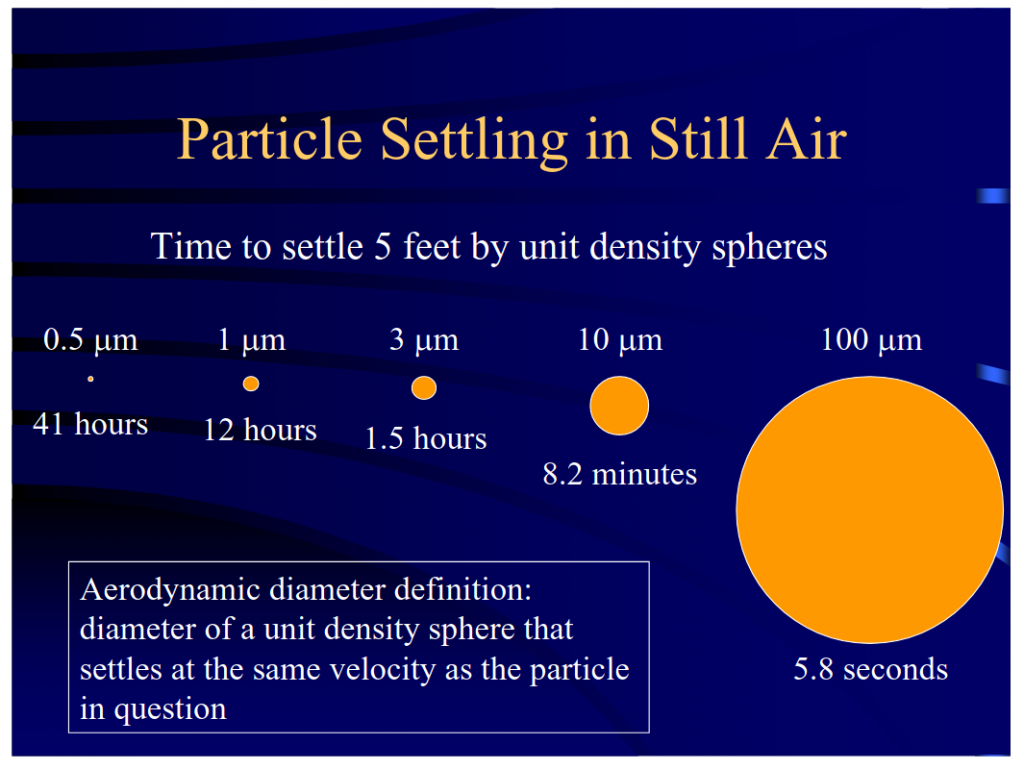
Talking can launch thousands of droplets so small they can remain suspended in the air for ten hours for one micro particles.

Scientists agree that the coronavirus jumps from person to person most often by hitching a ride inside tiny respiratory droplets. These droplets tend to fall to the ground within a few feet of the person who emits them. They may land on surfaces like doorknobs, where people can touch lingering virus particles and transfer them to their face. But some droplets can remain aloft, and be inhaled by others.
Droplets become microdroplets and are formed by people by breathing talking, sneezing, coughing and toilet flushing. These tiny particles evaporate, stay afloat and do not drop down nor exhaust on their own.
How droplets become aerosols: https://www.cdc.gov/niosh/topics/aerosols/pdfs/Aerosol_101.pdf
When people breathe, cough and sneeze, they release respiratory droplets and smaller aerosols less than five millionths of a meter in size. Compared with respiratory droplets, the smaller aerosols can remain in the air for longer periods of time. The current data suggest the novel coronavirus is primarily transmitted through contact with larger droplets, but tiny aerosols can also harbor the virus and may pose a threat to people, especially indoors. To establish a sound defense against these aerosols, informed management of airflow and airborne contaminants could be critical.https://www.nist.gov/news-events/news/2020/06/nist-airflow-model-could-help-reduce-indoor-exposure-aerosols-carrying
Three factors seem to be particularly important for aerosol transmission: proximity to the infected person, air flow and timing.
Larger droplets are heavy and float down quickly — unless there’s a breeze or an air-conditioning blast — and can’t penetrate surgical masks. But droplets less than 5 microns in diameter, called aerosols, can linger in the air for hours. They travel further, last longer and have the potential of more spread than the large droplets,” Dr. Barouch said.https://www.nytimes.com/2020/05/29/health/coronavirus-transmission-dose.html“
Researchers from the National Institutes of Health used lasers to illuminate and count how many droplets of saliva were flung into the air by a person talking with and without a face mask. The paper was only recently published officially. When the researcher used a simple cloth face cover, nearly all the droplets were blocked.
This evidence is only relevant if COVID-19 is transmitted by droplets from a person’s mouth. It is. There are many documented super-spreading cases connected with activities – like singing in enclosed spaces – that create a lot of droplets.he light-scattering experiment cannot see “micro-droplets” that are smaller than 5 microns and could contain some viral particles.
How far does the virus move? And is it stable and concentrated enough at the end of its journey to harm someone’s health?https://www.unmc.edu/pathology/faculty/bios/santarpia.html
Solutions include source capture of airborne viral and bacterial pathogens (including influenza, COVID-19, SARS, MERSA) utilization filtration by increasing number of air exchanges through HEPA and MERV media, mixing with fresh air and exhausting externally.
Bringing in fresh air and stratify it utilizing high efficiency portable fan units to reduce viral and bacterial load in shared air spaces:
- Conference rooms
- Bars
- Restaurants
- Medical / Dental office waiting rooms
- Hospital clean rooms
- Patient Isolation Units
- Doctor/Nurse break areas

